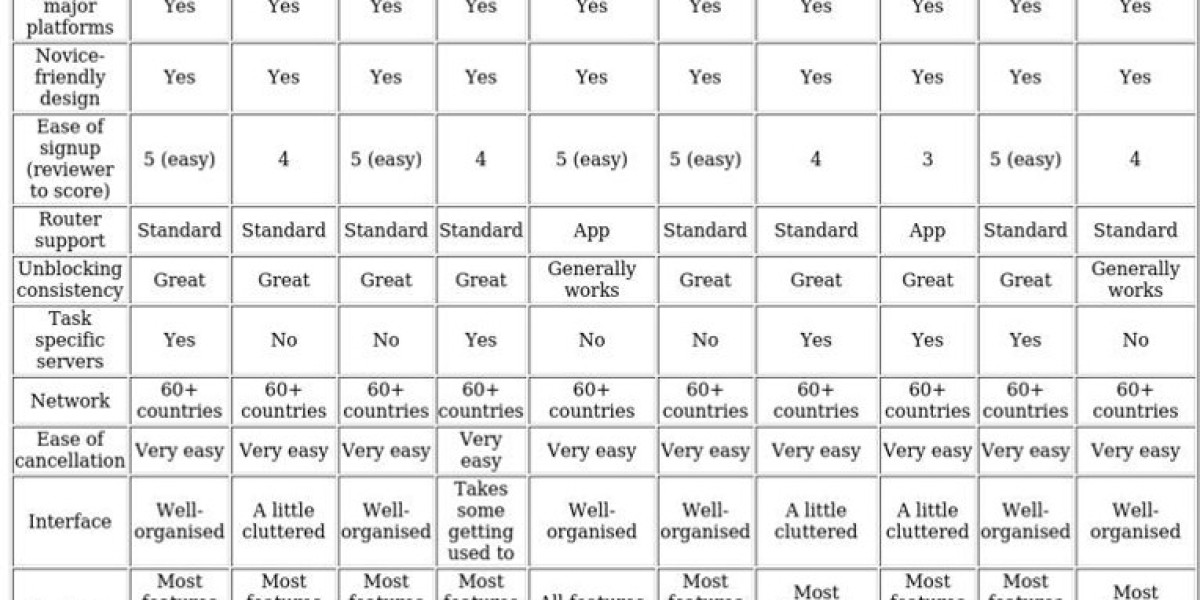The ULTIMATE Test Tren Dbol Cycle PDF Cooking, Food & Wine Lifestyle
**The Future of Technology: How Emerging Innovations Will Redefine Data Analytics and Cybersecurity**
---
### 1. Introduction
Over the last decade, the digital economy has been reshaped by a confluence of technological breakthroughs—AI-driven analytics, edge computing, quantum research, and more. These advances have already begun to blur the lines between data science and cybersecurity, forcing organizations to rethink how they collect, process, protect, and act on information. The next wave will accelerate this convergence even further.
---
### 2. Pillars of the Emerging Landscape
| Pillar | What It Is | Why It Matters |
|--------|------------|----------------|
| **Generative AI & Large Language Models (LLMs)** | Models that can produce realistic text, code, and data based on patterns learned from vast corpora. | Automates insights generation; enables dynamic content creation; introduces new attack vectors (deepfakes, synthetic phishing). |
| **Federated & Differential Privacy** | Decentralized learning that aggregates model updates without sharing raw data. | Preserves user privacy while extracting population-level signals; reduces risk of data leaks from central servers. |
| **Edge AI & TinyML** | Running machine learning inference on low-power devices (IoT, smartphones). | Reduces latency; limits data exposure to cloud; introduces new security concerns (firmware tampering). |
| **Explainable/Transparent ML** | Techniques that provide human-understandable rationale for model decisions. | Builds trust in AI systems; aids regulatory compliance; may expose internal logic to attackers if misused. |
---
## 3. Adversarial Scenarios and Mitigations
Below are five concrete adversarial scenarios illustrating how malicious actors could exploit data collection processes, followed by mitigation strategies.
| # | Scenario | Potential Impact | Mitigation |
|---|----------|------------------|------------|
|1| **Data Poisoning**: An attacker injects manipulated user data during the training phase (e.g., falsified location logs). | Model predictions become biased or inaccurate; could be used to steer recommendation systems. | • Data validation and sanitization.
• Use robust learning algorithms (e.g., adversarial training).
• Monitor for statistical anomalies in incoming data streams. |
|2| **Profile Inference**: By correlating sparse location samples with public datasets, an attacker reconstructs detailed user itineraries. | Privacy breach; potential for targeted attacks or stalking. | • Apply differential privacy to shared datasets.
• Use k-anonymity for location points.
• Enforce strict access controls on raw data. |
|3| **Data Poisoning**: An adversary injects fabricated location records to bias model predictions (e.g., mislead recommendation systems). | Service degradation; manipulation of user experience. | • Validate sensor data against device identifiers and timestamps.
• Use robust aggregation techniques resistant to outliers.
• Monitor for anomalous data patterns. |
|4| **Unauthorized Access**: Attackers gain access to the backend infrastructure, potentially exfiltrating sensitive location logs. | Privacy breach; regulatory non-compliance. | • Harden servers with least privilege principle.
• Deploy intrusion detection and prevention systems.
• Regular penetration testing. |
---
## 4. Recommendations for Robustness and Compliance
1. **Data Minimization**: Store only the essential anonymized data needed for analytics (e.g., aggregated counts). Avoid keeping raw location traces or timestamps.
2. **Strong Encryption**:
- Use AES-256 in GCM mode for encryption at rest.
- Employ TLS 1.3 for all network traffic.
3. **Key Management**: Store encryption keys in a dedicated HSM, rotate them regularly, and audit access logs.
4. **Regular Audits & Penetration Testing**: Engage third-party security firms annually to identify vulnerabilities.
5. **Compliance Checks**:
- Conduct Data Protection Impact Assessments (DPIA) per GDPR guidelines.
- Prepare for potential audits by local authorities in the jurisdictions where data is stored or processed.
6. **Incident Response Plan**: Define clear procedures for breach detection, containment, notification to regulators and affected users within 72 hours as mandated by GDPR.
---
## 3. Comparative Analysis of Edge-Enabled Data Analytics Strategies
| Strategy | Architectural Overview | Computational Load | Latency | Scalability | Security / Privacy Implications |
|----------|------------------------|--------------------|---------|-------------|----------------------------------|
| **Distributed Microservices** | Independent services (e.g., data ingestion, aggregation, analytics) deployed across edge nodes; orchestrated via service mesh. | Moderate per-service CPU/GPU usage; can be scaled horizontally. | Low to moderate: microservices communicate over local network or message bus. | High: add more nodes or instances of each service. | Fine-grained isolation reduces risk; however, inter-service communication may expose data unless encrypted. |
| **Serverless Functions** | Stateless functions triggered by events (e.g., sensor data). | Minimal CPU/GPU per invocation; runtime environment overhead. | Low latency if functions run locally; cold starts can add delay. | Excellent: scale automatically with event volume. | Security depends on platform; functions may share underlying host resources, potentially increasing attack surface. |
| **Container Orchestration** (e.g., Kubernetes) | Deploys containers that encapsulate applications and services. | Overhead from orchestration system but provides efficient resource scheduling. | Variable; can be optimized for low latency with proper tuning. | High: orchestrators manage scaling, self-healing, load balancing. | Requires secure configuration of control plane, RBAC policies to mitigate privilege escalation attacks. |
---
### 4. Comparative Analysis
| **Aspect** | **Traditional Architecture** | **Proposed Edge-Enabled Architecture** |
|------------|------------------------------|----------------------------------------|
| **Latency** | High (tens of milliseconds) due to routing through central cloud | Low (sub-millisecond) because data stays local and uses efficient protocols |
| **Throughput** | Limited by backhaul capacity and centralized processing bottlenecks | Potentially higher due to parallel edge processing and localized traffic |
| **Reliability** | Dependent on network connectivity; single points of failure at central cloud | More resilient as edge nodes can operate autonomously when disconnected |
| **Scalability** | Centralized scaling requires adding more data centers; complex coordination | Scales by deploying additional edge nodes (CPEs) with minimal orchestration overhead |
| **Latency Sensitivity** | Unsuitable for real-time or ultra-low-latency applications | Designed to meet stringent latency requirements of emerging services |
| **Energy Efficiency** | High due to large centralized data centers and constant connectivity | Edge devices can be more energy‑aware; distributed processing reduces backhaul traffic |
---
## 4. Future‑Proofing Considerations
1. **Hardware Upgrade Paths**
- Design CPEs with modular processors (e.g., ARM‑based SoCs) that allow firmware‑level upgrades or optional hardware acceleration (DSP, FPGA).
- Provide sufficient RAM and storage to accommodate future software stacks.
2. **Software Stack Evolution**
- Adopt containerization (Docker/Kubernetes) on edge devices to enable rapid deployment of new services.
- Use standardized APIs for network functions (e.g., NFV MANO interfaces) to allow seamless integration with 5G core networks.
3. **Security Hardening**
- Implement secure boot and firmware verification mechanisms to prevent tampering.
- Provide a hardened operating system image, with minimal attack surface.
4. **Interoperability and git.xemo-net.de Certification**
- Follow industry specifications (e.g., IEEE P1900 for wireless protocols) and obtain relevant certifications (Wi-Fi Alliance, 3GPP) to ensure compatibility with existing infrastructure.
---
### Conclusion
By combining a carefully selected set of hardware components—high‑performance multi‑core CPU, ample DDR4 RAM, NVMe SSD, dual‑band Wi‑Fi NIC, optional 5G modem, and low‑power GPU—with a lightweight yet capable Linux distribution (Ubuntu Server / Lubuntu), we can build an affordable yet high‑performance wireless device. This configuration supports modern applications such as VoIP, video conferencing, streaming, edge computing, and IoT connectivity while maintaining low power consumption and cost, making it ideal for the evolving landscape of 5G and beyond.
Url: https://www.thetechspot.com/2023/04/linux-ubuntu-lubuntu-ideal.html


